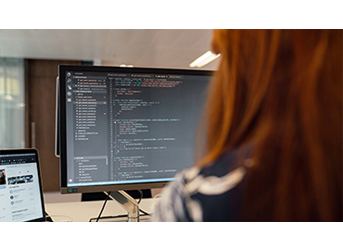April FX Consensus Forecast

April FX Consensus Forecast
4 minute readThe US economy was gripped by a slew of activities in March. The Russia-Ukraine crisis, supply chain troubles, rising commodities, and energy prices, persistently high inflation, and finally Biden's budget for the new year, kept markets on the backfoot and risk sentiment cautious. However, according to the latest data, the U.S. economy concluded 2021 by increasing at a robust 6.9% annual rate in the last quarter of the year, slightly below predictions. The nation's Gross Domestic Product — the total output of goods and services — increased by 5.7% in 2021, the strongest calendar-year rise since a 7.2% increase in 1984 in the aftermath of a severe recession. This is slightly less than the government's initial prediction of 7%. The lower figure is owed to a slowdown in consumer spending as well as fewer exports. Moreover, economists think that growth would decelerate considerably this year, particularly in the first quarter of 2022. Higher inflation is anticipated to weigh on consumer spending as Americans become more gloomy about the economy. Home sales have declined as the Federal Reserve has begun to raise borrowing costs, resulting in a dramatic increase in mortgage rates. Exports may suffer as a result of the disruption to international economies caused by Russia's invasion of Ukraine.
Inflation is at a four-decade high, and the Fed is pondering a half-point rise at its next meeting to bring it down. The latest data shows that consumer prices in the United States increased in February to a new 40-year high, with inflation expected to soar much more in the aftermath of Russia's invasion of Ukraine. The consumer price index increased 7.9% year on year, following a 7.5% annual gain in January. The widely observed inflation gauge was up 0.8% month on month in February, indicating higher gasoline, food, and shelter expenses. Excluding volatile food and energy components, so-called core prices rose 0.5% month on month and 6.4% year on year. The results demonstrate that the inflationary cloud has become more persistent and expansive over the economy. The price increase has compelled the Federal Reserve to halt its two-year period of near-zero interest rates. This month, Fed officials lifted their benchmark lending rate from zero to a quarter-point increase. To ensure that this persistent pricing pressure subsides, Chair Powell and his colleagues have shifted from a long-standing preference for slow and gradual interest-rate increases and signaled a front-loading policy with a half-point hike on the table in May and more to come.
Consumer confidence upholds and business investments are ramping up. Consumer confidence in the United States increased in March, indicating that good job growth offset Americans' concerns about decades-high inflation, which threatens spending and growth. The Conference Board's index, which measures consumer confidence rose to 107.2 from 105.7 in February, which was the lowest score in a year. Despite the increase in confidence, Americans are experiencing the biggest inflation since 1982, which is already forcing some to curtail their purchases of particular goods or services, and a slowdown in consumption would represent a risk to economic growth. Having said that, according to the most recent statistics, retail sales in February climbed modestly at 0.3%, compared to predictions of 0.4%
Moreover, despite rising inflationary pressures, persistent labor market improvements have pushed employment back to pre-pandemic levels in several areas, bolstering US households. The economy likely added about half a million jobs in March, while the unemployment rate dipped to 3.7%. Despite solid labor market and salary growth, the average interest rate on a 30-year fixed-rate mortgage in the United States jumped to 4.42%, such market volatility is uncommon and the last time interest rates recovered so swiftly was nearly two decades ago.
On the business side, as a result of the pandemic, American corporations are developing their investments in technology and other capital expenditures. After adjusting for inflation, private nonresidential business investment increased 7.4% in 2021 compared to the previous year, the quickest rate since 2012 and a notable rebound from the 5.3% decrease in 2020. Economists predict that company expenditure will remain strong this year. According to the Institute for Supply Management, manufacturing firms intend to increase capital expenditures by 7.7% in nominal terms in 2022. Service companies anticipate a 10.3% increase.
Want to read more? Download the report here.


